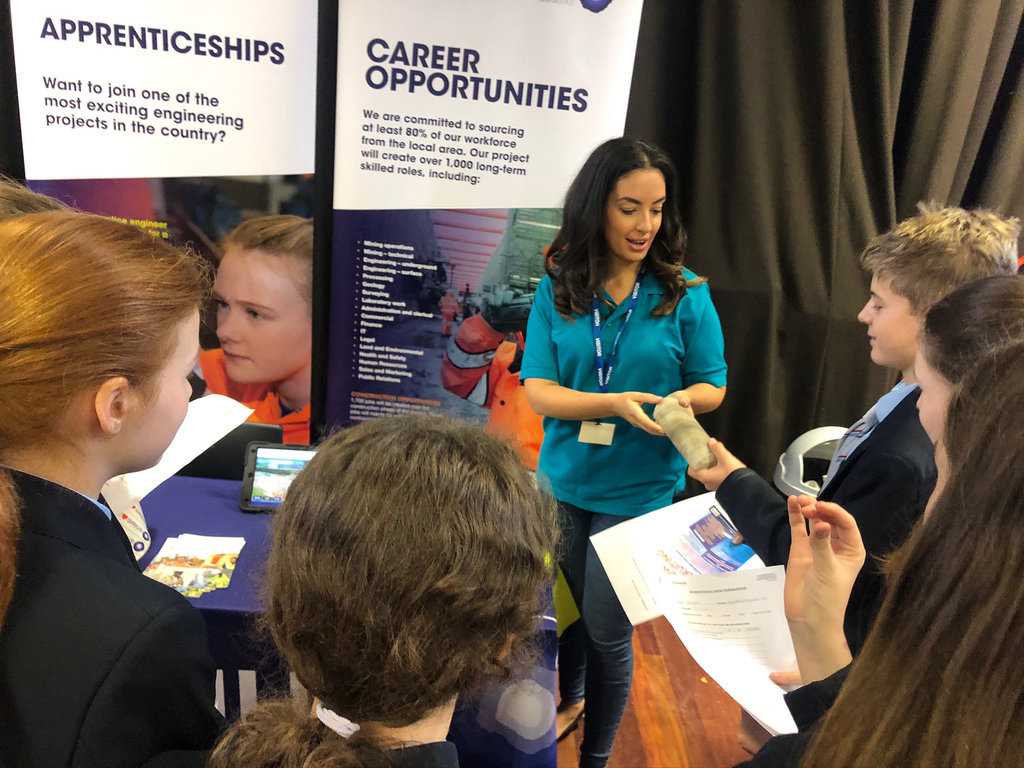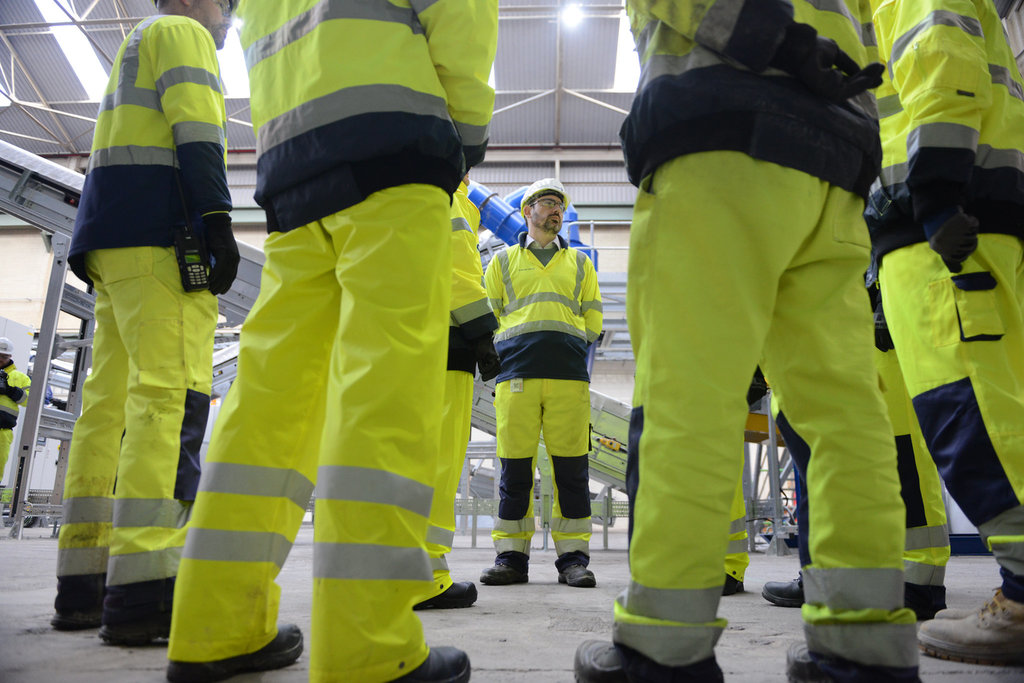The big interview
Apprenticeships: the solution to mining’s staffing crisis?
With mining positions going unfilled, getting young talent into the industry is a must. Kit Million Ross asks Anglo American how apprenticeship schemes could provide the answer.

Zahira Quattrocchi, group head of culture and organisation effectiveness, Anglo American. Credit: Anglo American.
A quick internet search for “mining staffing crisis” yields articles both extremely recent and years old showing that the mining industry is struggling to recruit and retain workers. Articles range from serious stats from the International Institute for Sustainable Development, all the way through to commentary from LadBible. Analysis by Mine Magazine’s parent company GlobalData noted that the Australian mining industry experienced a 31% drop in new job postings in Q2 2023 compared with the previous quarter, with similar trends being seen across the world. But how can the industry solve its talent shortages and recruit young people into the industry?
Apprenticeship schemes present a viable and attractive solution to these issues. Young people entering these schemes often get a fast-track into a new career, and most schemes allow apprentices to gain nationally recognised qualifications while working, so new starters can earn while they learn. But are these schemes successful, and what more can the industry do to bring in new talent? Mine Magazine spoke to Zahira Quattrocchi, group head of culture and organisation effectiveness at Anglo American, to see how the international mining firm makes apprenticeships work for everyone’s benefit.
Kit Million Ross: What apprenticeship schemes does Anglo American have in place to get young people into the industry?
Zahira Quattrocchi: Our apprenticeship schemes are spread across our business. Our inclusion and diversity apprenticeship scheme based out of our London office gives an opportunity to foster talent from communities that might traditionally have been under-represented within our business. The programme was recently extended to our South African main office, where we are piloting a corporate apprenticeship programme focusing on developing young talent, all of whom have some form of disability. We will continue to evaluate our corporate office apprenticeship scheme and roll out to other geographies as needed.
We also run a number of individualised apprenticeship schemes across our global operations – tailored to objectives of each of our sites and the local communities which they support. In the UK, this includes schemes such as an advanced engineering apprenticeship at our Woodsmith project [a fertiliser mine in north-east England], and our cyber-security apprenticeship programme – formerly run out of our London headquarters but now also located at Woodsmith. In Australia, we run four-year programmes at each of our steelmaking coal sites where apprentices have the opportunity to work across the operations, including the workshop, coal processing plant and in the field to develop their skills alongside mentors.
Kit Million Ross: How long have these been running, and what has changed over that time period?
Zahira Quattrocchi: The programmes at our steelmaking coal sites have been running since operation inception. In the UK our cyber-security programme launched in 2018, quickly followed by our inclusion and diversity programme which took on the first cohort in 2019.
The results of our that programme to date have exceeded our expectations. Almost 90% of our first cohort of apprentices have either secured roles within Anglo American or moved on to jobs elsewhere, using the qualifications they gained with us. Three apprentices have stayed at Anglo American and others have moved onto promising careers with other organisations in their chosen fields. We are working with the current cohort of 15 to help them achieve similarly positive long-term outcomes.

Apprenticeships require outreach from companies. Credit: Anglo American
While the UK programme is still only on its second cohort, we believe it has proved to be a major success and blueprint for expanding our recruitment to include young talent that we may have missed in the past. The result is a small-but-growing group of talented and committed employees who make our business more diverse, stronger, and ultimately sustainable. We are actively recruiting for our third cohort, which will be of similar size to our previous ones, with all successful candidates being drawn from our local community starting in the new year.
Kit Million Ross: How many people have come into the company through these schemes?
Zahira Quattrocchi: At Anglo American globally we have approximately 2,200 apprentices, both at a site level and within our offices. The majority of our apprentices are on-site in South Africa.
Kit Million Ross: Have people been staying with the company or moving on to other places?
Zahira Quattrocchi: With regard to our UK corporate scheme, three apprentices out of a cohort of eight stayed at Anglo American in 2021. We are working actively with the current cohort of 13 and with the wider business to help them achieve similarly positive long-term outcomes.
Kit Million Ross: How have applicant numbers varied over the years, and why do you think this is?
Zahira Quattrocchi: According to the UK Government’s governing body for apprenticeships, there has been a 1.6% increase in the number of apprentice participants for the 2022/23 academic year - 703,670 in 2022/23 vs 692,920 in 2021/22. This is in line with what we have seen as an organisation during our cohort intakes and what we hope to see over the coming months, as we recruit our third cohort.

Apprentice schemes often involve on-site work. Credit: Anglo American
In the broader Australia context, according to the Australian National Centre for Vocational Education Research apprenticeships increased by 19% in 2022, indicating an upwards trend of applicants. This is due to the mining industry upskilling its workforce as a priority, and being an employer of choice with competitive packages and job security. The growth in female apprentices and trainees reflects the industry’s commitment to increasing the representation of women across the workforce.
Kit Million Ross: What can the mining industry as a whole do to recruit and retain young people?
Zahira Quattrocchi: In the last few decades, the mining industry has been investing in collaborative partnerships such as developing tailored work readiness, apprenticeship and traineeship, cadetship and recruitment pathways. In high schools and trade colleges, STEM programmes are proving to be a strong investment in attracting young people to careers in mining from an earlier age.
Kit Million Ross: In your view, do you think apprenticeship/traineeship schemes are effective in getting young people into the industry, and why do you think this is?
Zahira Quattrocchi: Yes; apprenticeships offer alternative pathways to entering the mining industry and successful candidates receive a nationally recognised qualification upon completion. In the current labour market, candidates are looking for more than just compensation and benefits, they want the security of gaining an education that will give them a competitive advantage in their careers.